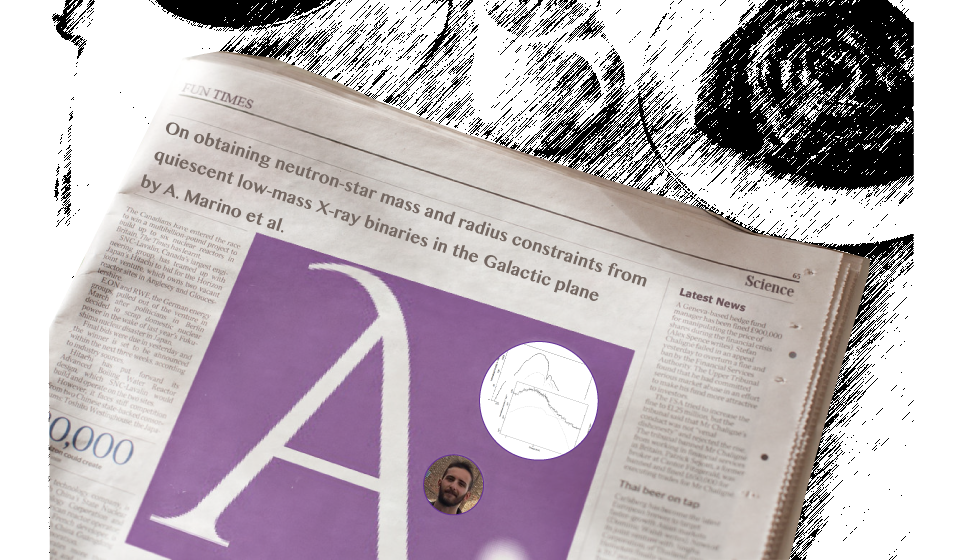
On obtaining neutron-star mass and radius constraints...

By Alessio Marino
Analysing spectra of quiescent Low Mass X-Ray Binaries (LMXBs) hosting Neutron Stars (NSs) is one of the main techniques for measuring the mass and/or the radius of NSs and, in turn, constrain the Equation of state of ultra-dense matter. However, the precision and the power of these constraints are heavily related to the quality of the spectra. Furthermore, several biases affect the results obtained with this method, in particular, the uncertainty in the distance, the possibility of missing the presence of a power-law component in the spectrum and the evidence that a small variation in the energy range over which the spectrum is extracted might change significantly the results of the fits. As shown in this paper, these biases and limitations could be partially overcome with ESA's Athena mission.
We simulated spectra of two LMXBs hosting Neutron Stars, 4U 1608-52 and EXO 0748-676, based on Chandra archival observations and compared the simulated with the “original” spectra. In the case of 4U 1608-52, while the quality of the Chandra spectrum is too poor to give valuable constraints on the mass and/or the radius of the NS, a fit with a composite quasi-thermal plus power-law model performed on the simulated Athena spectrum results in precise outcomes (relative errors of 0,01-0,001%). On the other hand, the Chandra spectral analysis of EXO 0748-676 is not only limited by the statistics, but also by the energy range dependence, which is apparent analysing a 0.3-10 keV and a 0.5-10 keV spectrum; a simulated single Athena spectrum of the source is, on the contrary, unaffected by the change in the energy range. These results show how in the Athena era the search for constraints on the equation of state of ultra-dense matter via NS radius and mass measurements might receive a considerable boost, although without precise distance measurements an uncertainty associated with the range of plausible distances of the source must be taken into account.

